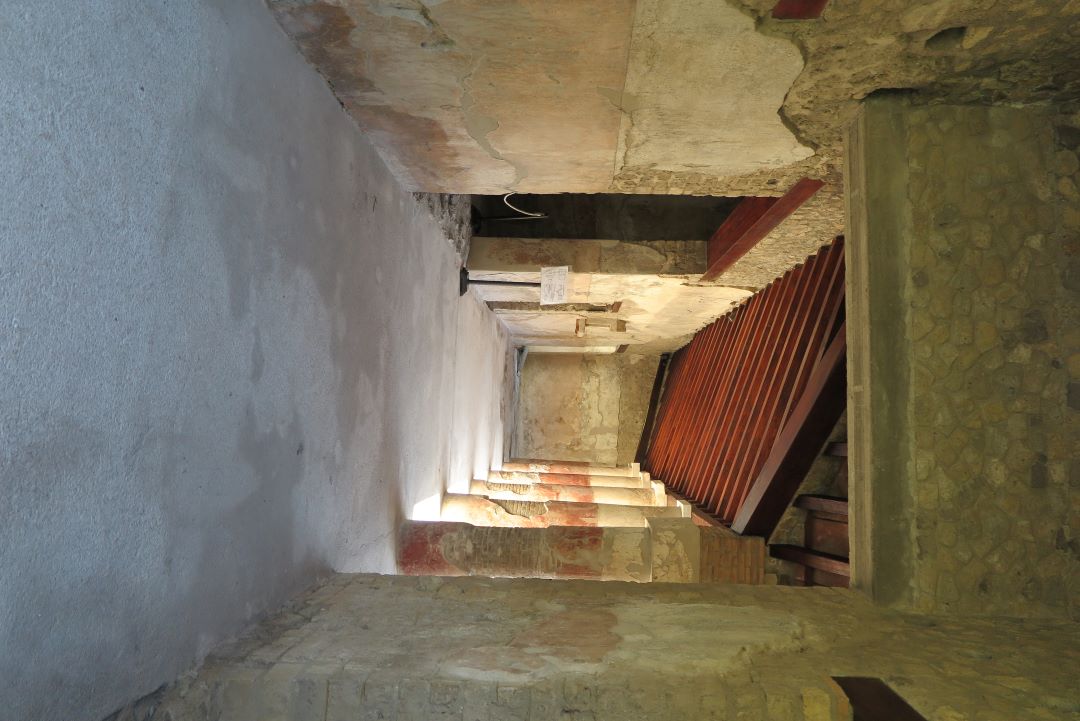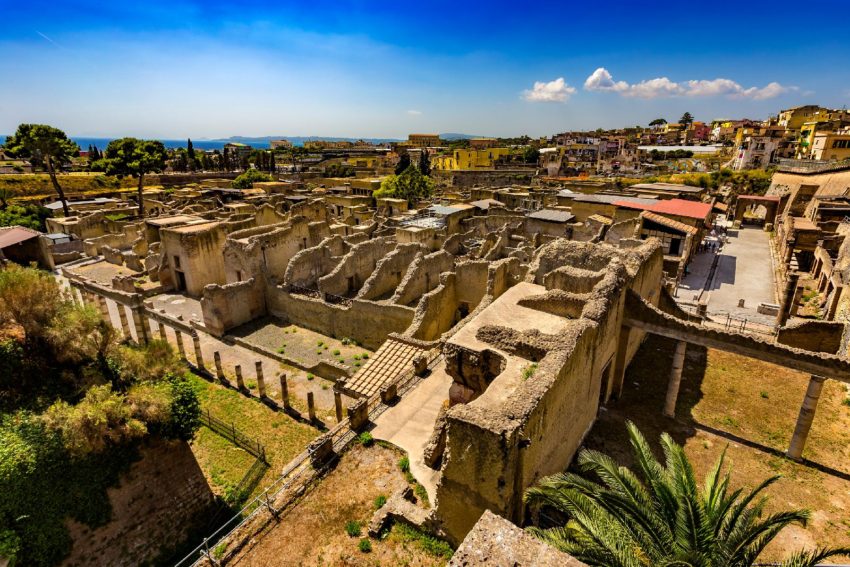VeLoCi's on-site inspections continuing: from Boscoreale to Torre Annunziata
After exploring the area of ancient Stabiae, the VeLoCi team moved on to Boscoreale and Torre Annunziata to get an overview of the settlements that had originated in what was once the suburban area of Pompeii, marked by sumptuous villas of leisure and many villae rusticae used for farming.
In Boscoreale we were visiting the so-called Villa Regina, a farm dating back to the 1st century BC and related to wine production, and the National Antiquarium ‘Man and Environment in the Vesuvian Territory’. This fascinating museum, directed by Dr. Anna Maria Sodo, aims to describe the daily life of Roman settlements and human interaction with the Vesuvian environment through a careful selection of objects organised by thematic areas. Among other things, artefacts and objects from the suburban villa of Civita Giuliana, including a very rare example of a ceremonial chariot, have been placed here.
The inspection then continued in Torre Annunziata, where there is the archaeological site of Oplontis, directed by Dr. Arianna Spinosa. Two Roman villas have been found in this area, one of which can be visited. It is Villa A, better known as the Villa of Poppea, an extraordinary residential complex that in antiquity was located overlooking the sea. For our studies, it has been quite helpful to meet the restorer Francesco Russo, who is working together with the archaeologist Antonio Arcudi on the securing of the rooms facing the western area that are still being excavated.
Together with Villa B (or the Villa of Lucius Crassius Tertius), the Villa of Poppea is currently the subject of a multidisciplinary research project called The Oplontis Project, which is headed by the University of Texas and involves specialists in archaeology, architecture and history. One of the collaborators of this research group is the Torrese historian Vincenzo Marasco, president of the Centro Studi Storici Nicolò d'Alagno, who so generously guided us to visit the most significant places of the modern Torre Annunziata.
The sanctuary of the Madonna della Neve and the hypogeum of the Reale Arciconfraternita del Suffragio proved to be of great interest. Among the historical buildings, we were particularly impressed by Palazzo Piccolomini, a magnificent complex that certainly deserves further historical-architectural study. The visit ended with a suggestive promenade towards other emblematic sites in the city, from the marquis Vito Nunziante's spa to Bayard station, passing Villa del Parnaso.
The next destination of our Grand Tour will be the city of Ercolano. Stay tuned!
Click on the image to see the photo gallery.























